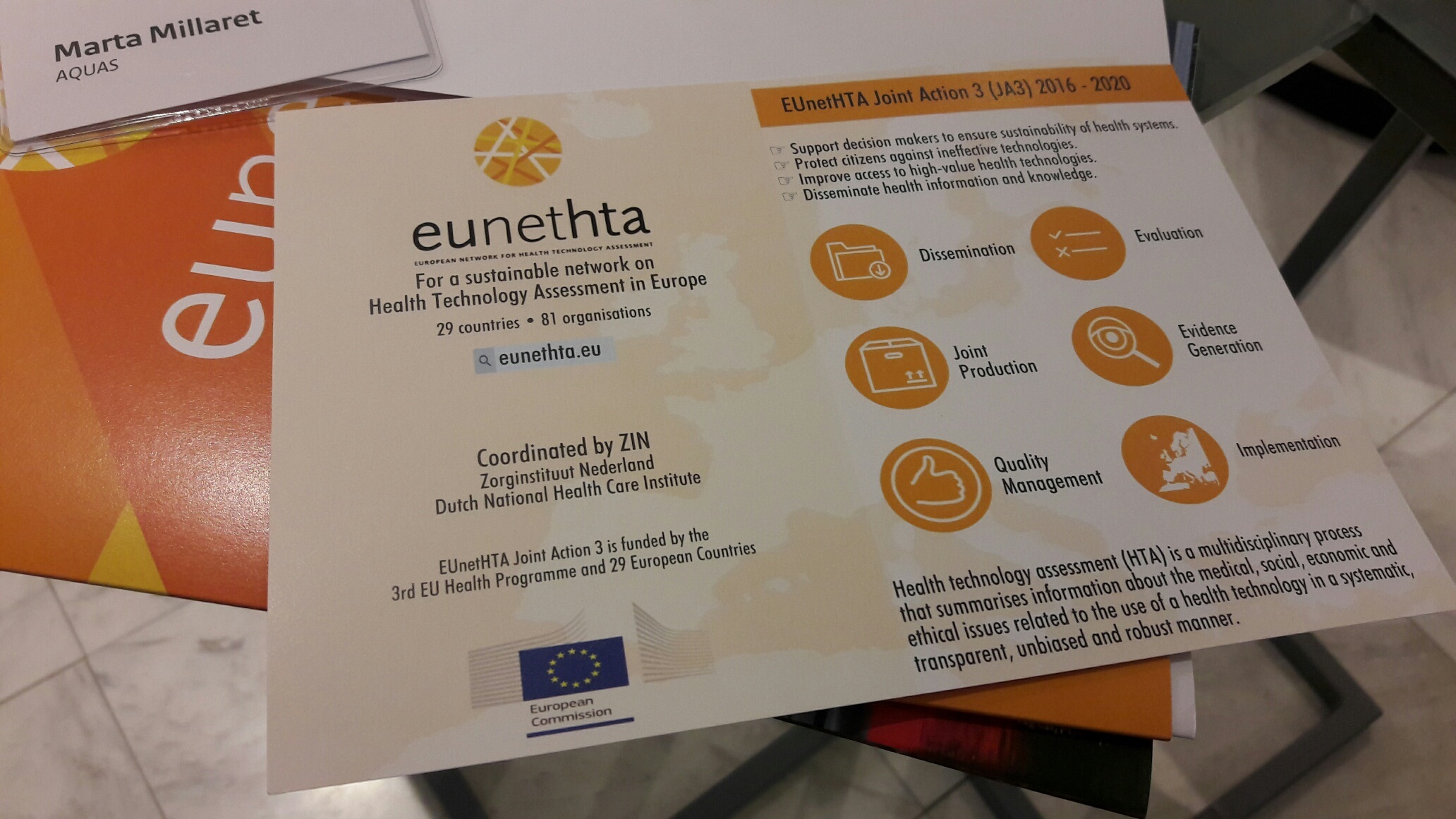
AQuAS is analysing the activities of dissemination of the EUnetHTA project, a European Joint Action comprised of 61 organisations from 29 countries and coordinated from the Zorginstituut Nederland in Holland. It is the European health technology assessment network.
Assessment, as Emmanuel Giménez talked about in this post,”can directly help in the practice, management and sustainability of different health systems” by providing the best available knowledge for taking decisions at different levels.
It is precisely on this subject that a proposal has recently been published regarding the regulation of drugs and health products within the framework of the European Commission and which is being debated and outlined for implementation.
The aim of the EUnetHTA project is to facilitate cooperation between different institutions in the field of health technology assessment to take advantage of expertise and useful knowledge to favour health systems which will consequently provide potential benefits for the health of citizens. It is about generating quality knowledge by using common methodologies in a systematic and transparent way and it is about doing this by working collaboratively and by avoiding duplicities.
AQuAS participates very actively in different work groups in the project (assessment, implementation, generation of evidence, dissemination) and today we are going to put the spotlight on the dissemination group, led by Iñaki Imaz of the Instituto de Salud Carlos III (Institute of Health Carlos III) in Madrid. This work group has the challenge of communicating more and better regarding what the EUnetTHA project is.

To do this, there are different strategies and one of these is the assessment of the dissemination itself, a task led by AQuAS. To this end, the different activities are being brought together and a first analysis has been carried out which will be repeated every four months with the idea of obtaining recommendations and specific actions.
In the first intake, almost a 100 activities have been included. 78% correspond to the activities in scientific meetings (workshops, presentations, oral communications and posters); 5% are articles in scientific publications with an impact factor in the Journal Citation Reports and the remainder (17%) are other publications, e-meetings and activity done in social networks.
This analysis will make it possible to look at who disseminates, what is disseminated and where it is disseminated as well as looking at the content and who the majority target audience is of these dissemination activities within the framework of the EUnetHTA project. The results of the first analysis will be presented at the next general assembly of the project in Cologne (Germany) at the end of the month.
We feel that it is interesting to find the way to involve all those participating in facilitating the dissemination of the project so as to achieve a more active communication of the EUnetHTA project. Involvement in dissemination means getting the people that work on a project to disseminate both their work and their project at the same time. In this way, everyone stands to gain.
Will we succeed in getting all participants more involved in the activities of dissemination? Will our assessment serve to improve things? That is to be seen.
Post written by Marta Millaret (@MartaMillaret).












